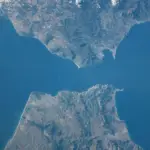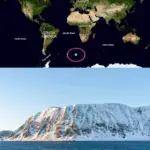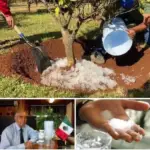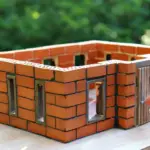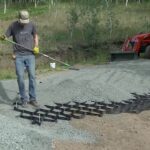Nestled in the frigid expanse of the North Atlantic Ocean, Iceland is a country of breathtaking contrasts. Known as the “Land of Fire and Ice,” it is a place where glaciers and volcanoes coexist in a dramatic and dynamic landscape. What makes Iceland geologically unique is its position on the Mid-Atlantic Ridge, a divergent tectonic boundary that stretches from the Arctic to the tropics. This rare geological phenomenon shapes Iceland’s terrain, culture, and allure, attracting scientists and travelers alike.

The Mid-Atlantic Ridge: A Global Geological Wonder
The Mid-Atlantic Ridge is one of the most significant features of Earth’s surface, forming a vast underwater mountain range that spans over 16,000 kilometers (10,000 miles).
- What It Is:
The ridge marks the boundary where the Eurasian and North American tectonic plates are moving apart. As magma rises from the mantle to fill the gap, new crust is formed, pushing the plates further apart. - Above Sea Level:
Most of this ridge lies beneath the ocean, but Iceland is an extraordinary exception. Here, the ridge emerges above the surface, creating a rugged and volcanic landscape unlike anywhere else on Earth.
Iceland’s Rift Valley: The Heart of Geological Activity
One of the most striking manifestations of the Mid-Atlantic Ridge in Iceland is the rift valley in Þingvellir (Thingvellir) National Park, a UNESCO World Heritage Site.
1. The Rift Valley
- Formation:
The rift valley is a result of the continuous pulling apart of the Eurasian and North American plates. This geological process creates deep fissures and cracks in the Earth’s crust, visible to visitors exploring the park. - Unique Experience:
Walking through the rift valley, you are literally standing on the boundary between two continents—a unique experience that showcases the raw power of plate tectonics.
2. Þingvellir National Park
- Cultural Significance:
Þingvellir is not only a geological marvel but also a historic site. It was the location of Iceland’s first parliament, the Alþingi, established in 930 AD, making it a place of immense cultural importance. - Activities:
Visitors can hike along the Almannagjá fault line, snorkel in the crystal-clear waters of the Silfra fissure, and marvel at the park’s stunning waterfalls and lava fields.
Volcanoes: Iceland’s Fiery Giants
Iceland’s position on the Mid-Atlantic Ridge makes it a hotspot for volcanic activity.
- Frequent Eruptions:
Iceland experiences eruptions every few years, with over 130 volcanic systems scattered across the island. - Notable Volcanoes:
- Eyjafjallajökull: Famously erupted in 2010, disrupting air travel across Europe.
- Hekla: Known as the “Gateway to Hell” in medieval times due to its frequent eruptions.
- Krafla: Located in the north, it is surrounded by stunning geothermal landscapes.
These eruptions play a significant role in shaping Iceland’s landscape and enriching its soil with nutrients, supporting agriculture in an otherwise harsh climate.
Geothermal Wonders: Springs, Geysers, and Energy
Iceland’s fiery underbelly isn’t just destructive—it’s also a source of incredible natural beauty and renewable energy.
1. Geothermal Springs
- Blue Lagoon: Perhaps the most famous geothermal spa in Iceland, its milky blue waters are rich in silica and other minerals.
- Hot Springs: Found all over the island, these natural pools offer relaxation amidst stunning scenery.
2. Geysers
- Strokkur: Located in the Haukadalur geothermal area, Strokkur erupts every 5–10 minutes, sending water up to 40 meters (130 feet) into the air.
- The Great Geysir: The namesake of all geysers worldwide, it is now mostly dormant but remains an iconic site.
3. Renewable Energy
- Iceland harnesses its geothermal activity for sustainable energy production. Over 85% of the country’s energy comes from renewable sources, making it a global leader in clean energy initiatives.
Glaciers and Ice Caps: The “Ice” in Iceland
Complementing its volcanic terrain are Iceland’s vast glaciers, which cover approximately 11% of its land area.
- Vatnajökull: The largest glacier in Europe, home to majestic ice caves and glacial lagoons like Jökulsárlón.
- Langjökull: A popular destination for ice tunnel tours and snowmobiling adventures.
- Melting Glaciers: Climate change poses a threat to these natural wonders, with glaciers retreating at an alarming rate in recent decades.
A Landscape Shaped by Fire and Ice
The interplay of fire and ice defines Iceland’s landscape, creating a unique mix of natural features:
- Lava fields and volcanic craters sit alongside icy fjords and towering glaciers.
- Rivers and waterfalls, like Gullfoss and Dettifoss, carve through basaltic terrain, showcasing the power of water in shaping the land.
- Black sand beaches, such as Reynisfjara, contrast starkly with the white glaciers, offering dramatic vistas.
Why Iceland’s Geology Matters
Iceland serves as a natural laboratory for understanding plate tectonics, volcanic processes, and glacial dynamics. Scientists study its unique features to learn more about Earth’s past, present, and future. Additionally, Iceland’s innovative use of geothermal energy sets an example for sustainable living in harmony with nature.
Like Us on Facebook!
Visiting Iceland: A Journey Through Time and Tectonics
A trip to Iceland is more than just sightseeing—it’s an immersion into the dynamic processes that shape our planet. Whether you’re walking through the rift valley, marveling at erupting geysers, or soaking in geothermal springs, you’re witnessing the Earth’s raw power and beauty.
Subscribe Us on YouTube!
For travelers, Iceland is a destination that offers not just scenic wonders but also a deeper appreciation for the forces that continually mold and transform our world.


